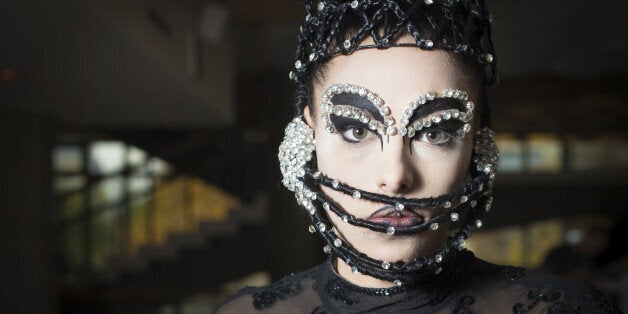
The past few decades have seen a revival of burlesque in the new, postmodern form of neo-burlesque. Increasingly, these stories relate to gender identity, and neo-burlesque has become a celebration of gender fluidity and pluralism.
In the postmodern world, in which we are no longer defined by binary definitions, femininity has become a complex proposition. Gender boundaries have been blurred, traditional ideas about masculinity and femininity have been shown to be artificially constructed. Neo-burlesque has embraced the gender pluralism of the twenty-first century by opening its doors to performers of all kinds, while simultaneously preserving the femininity that is at the core of burlesque performance.
Neo-burlesque takes a critical approach to historical presentations of the female form. In this post-feminist age, burlesque has found a home among audiences and performers who seek to celebrate the female form in all shapes and sizes. Through "comedic and playful" engagement with "nostalgic femininity," burlesque destabilizes the popular female image while simultaneously embracing it. Costumes frequently include corsets, in reference to the golden age of burlesque. Long and elaborate stripteases delay the approach to nudity as complex costumes must be removed piece-by-piece, revealing the extent to which women of past generations have gone to conform to the feminine ideal. The moment at which the body is released, with all its flaws, becomes a celebration of the naturally imperfect body.
These performances are overt in their celebration of sexuality and inclusivity. Neo-burlesque performers flaunt whatever they have, whether it is big or small, squishy or toned, smooth or wrinkled, male or female, or somewhere in between. The audience is reassured that they too, regardless of their age or appearance, have the potential to be sexually desirable. It's not about shape, size or gender; it's all about attitude.
Regardless of their gender, neo-burlesque performers share common methods of constructing femininity. Through gestures and costume, they reveal femininity to be as artificial for women as it is for men. They amplify traditionally female gestures, performing the same hyper-femininity that one might encounter in a drag act. It is not always immediately obvious if a performer is male, female or transgender, as their presentation of femininity is always equally inauthentic. This is perhaps epitomized in the performances of New York-based burlesque artist know as World Famous *Bob*. Born a female, but identifying as a male who in turn identifies as a woman, *Bob* describes herself as a "female-female impersonator".
Burlesque events including the London Burlesque Festival and the World Burlesque Games dedicate at least part of their schedule to "boylesque". This is not male stripping as one might associate with The Full Monty or the Chippendales, but rather a form of striptease that very deliberately adheres to the traditions and value of burlesque. Boylesque performers compete with female performers in their performance of femininity. They are frequently dressed in corsets and make-up, and although very few of them identify as female impersonators, they adopt female gestures.
Through female affectation, boylesque performers highlight the shortcomings of the male body for comic effect. Some wear nipple tassels, and shimmy as if aspiring to jiggle. The gesture acknowledges that, although the world of burlesque is increasingly inclusive, it is dominated by women, or more specifically, by female bodies. Their actions become parodies of their own attempts at gender transgression.
When there is a more traditionally masculine presence on the burlesque stage, it is often in the form of a prop or other substitute for a real man. Burlesque has a tradition of employing a "surrogate male presence" in half-and-half acts such as Bunny Love's It's A Man's World act (see below).
For transgender performers, burlesque is an opportunity to examine their transition between male and female identities. Transgender performers such as "Jeannie" play on audiences expectations about the transgender body, beginning her performance as an apparent drag-act, but ending with the revelation that she is post-op.
Neo-burlesque has emerged in a world that is so saturated with nudity that the idealized naked female is no longer a spectacle. As performers at the upcoming World Burlesque Games will show, contemporary burlesque is more a about attitude than nakedness. The attitude that unites the neo-burlesque community is joyful celebration of the human form, and as a result, burlesque has become a safe space for performers who might otherwise struggle to find a place for themselves in the entertainment industry.
The World Burlesque Games take place at Conway Hall in London, on 9-10 Dec. Read more about burlesque in Acts of Undressing.